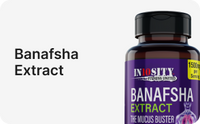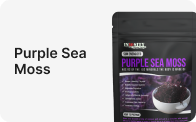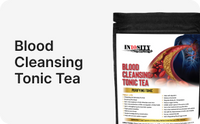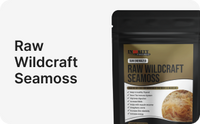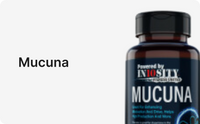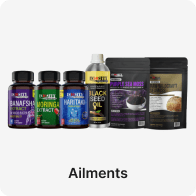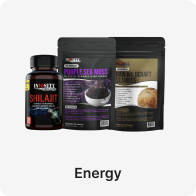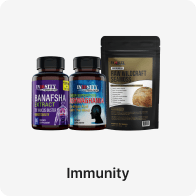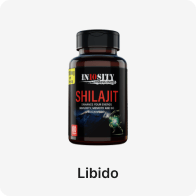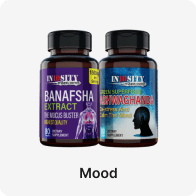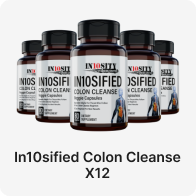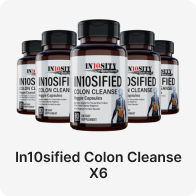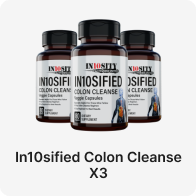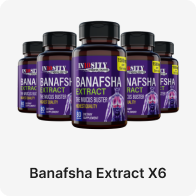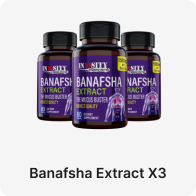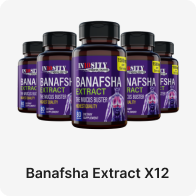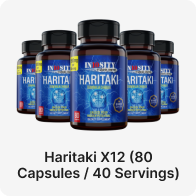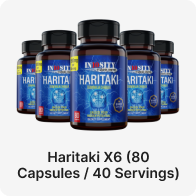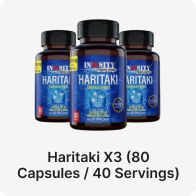Meat Glue: What Is It, And Why Is It Bad?
There was a time when if you wanted a steak, you went to the butcher and bought a steak. But these days, meat isn't always what it seems. Sometimes meat is held together by something called "meat glue."
Yes, you heard it right - meat glue.
A video went viral a few years back that featured meat glue and its ability to glue meat together. The footage showed a chef sprinkling a white powder on some raw chicken strips and then rolling it all up into one big tube. He then cut the tube into portions that looked like perfectly formed chicken breasts.
The video freaked many people out, and meat glue has been vilified ever since. But what exactly is meat glue? And is it bad for you?

Meat glue (also known as transglutaminase) is a food additive made from the enzyme transglutaminase. This enzyme is used to bind proteins together, which is why meat glue is often used to bind different cuts of meat together. This creates the illusion of a single piece of meat when in reality, it is made up of multiple pieces.
Although transglutaminase is found naturally in our bodies and helps us to digest meat, it can have dangerous consequences when it is artificially added to meat.
Transglutaminase (TG) is commonly used in many processed foods today. However, it's a controversial food additive. In 2010 the European Union banned its use. However, the United States Department of Agriculture (USDA) still allows it, and the Food & Drug Administration (FDA) classifies meat glue as "generally recognized as safe."
Examples of foods made using meat glue include imitation crab meat and sometimes fish balls, hot dogs, cheese, and chicken nuggets.

Meat glue is made from cultivated bacteria or enzymes that are extracted from animal blood plasma (pigs and cows). The bacteria are grown in a lab, then dried and pulverized into a powder. This powder is sold to food manufacturers who use it as an additive in processed foods.
When transglutaminase is added to meat, it reacts with the protein molecules and creates a new bond. This bond is much stronger than the natural bonds between proteins, which is why meat glue can hold together bits of meat that would otherwise fall apart.
Asides from transglutaminase, there are other types of meat glue. Methylcellulose, for example, is a type of meat glue made from plant cellulose. Most meat glues are mixed with other ingredients, such as gelatin and caseinate. These ingredients help to create a more stable gel that can hold together different pieces of meat.

Well, there are a few reasons. The first is that it can make cheaper cuts of meat look like more expensive ones. For example, a butcher can take a few small pieces of chicken thighs and use meat glue to form them into one large piece that looks like breasts.
The second reason is that it can help to keep meat from drying out. When meat is cooked, it loses moisture and can become tough. By gluing together smaller pieces of meat, there is less surface area for the moisture to escape from.
Meat glue can make otherwise unusable cuts of meat usable. For example, if a chicken breast has a large bone in it, the butcher can use meat glue to attach two smaller pieces of chicken breast meat to the bone and create a cut that can be sold.
Finally, meat glue can help to create new and compelling shapes. A chef might use meat glue to make a spiral sausage or to bind together different meats to create a unique flavor.
Here are some of the most common types of meat glue:
Activa TG-FP: This kind of meat glue is commonly used to restructure pork. It claims to help you lose weight, but it also comes with some health risks. It contains: transglutaminase, maltodextrin, and skim milk powder.
Activa TG-GB: This unique TG is for making stronger bonds than the other TGs make. It can't be mixed with water and has to be added directly. It contains transglutaminase, maltodextrin, gelatin, and anti-caking agents.
Activa TG-GS: This product is used to bond meats, and the difference between this product and other similar products is that it does not need to be refrigerated and will not go bad. It contains sodium chloride, gelatin, trisodium phosphate, maltodextrin, transglutaminase, and safflower oil.
Activa TG-RM: Most people use this TG. It's commonly used for red meat, poultry, seafood, and other muscle foods. You can also use it with foods that don't have a lot of protein. And you can either use it dry or mix it with water. Here are the ingredients: transglutaminase, maltodextrin, and sodium caseinate (a milk derivative.)

The makers of meat glue claim that it is a safe and natural way to bind the meat together. However, there are many health concerns associated with meat glue.
This means you could end up with undercooked or burnt meat. This is because different pieces of meat glued together will have different thicknesses, so they will cook at different rates.
This is because meat glue is often made from animal products high in saturated fat, such as pork or beef. In addition, some brands of meat glue may also contain MSG, a known trigger of migraines.
The main issue with meat glue isn't necessarily the ingredient itself but rather the increased risk of bacterial contamination of the foods in which it's used. The process of gluing meat together creates tiny cuts and scrapes in the meat, which can provide a place for bacteria to grow.
Not only is there a greater chance of infection and food poisoning when consuming transglutaminase, but common diseases have been linked to it as well. Though not caused directly by the enzyme, unregulated consumption creates a higher risk for individuals.
For example, TG imbalance has been linked to cognitive illnesses such as Alzheimer’s and Parkinson's disease. It can also lead to cataract development, arteriosclerosis (hardening of the arteries), and various skin disorders.
This is because gluing meat together often uses chemicals, such as bleach, which can remain on the meat and be ingested when you eat it. This can lead to food poisoning and other serious health problems like cancer and liver damage. If you want to learn how to cleanse your blood of toxins, click here.
As mentioned earlier, meat glue is made from the enzyme transglutaminase, which is also found in gluten. This means that meat glued together with meat glue may worsen symptoms of celiac disease or food allergies.

So now that you know all about meat glue and why it is bad, how can you avoid it?
When you are buying food, make sure to check the label to see if it has been glued together with meat glue. If the product contains transglutaminase or any other similar-sounding ingredient, then it is likely that meat glue has been used.
What are processed meats? Processed meats are any meats that have been treated with chemicals or other additives. This includes hot dogs, sausages, ham, bacon, and other similar meats. These meats are more likely to contain meat glue, so it is best to avoid them.
One of the best ways to avoid meat glue is to switch to a plant-based diet. This way, you will not have to worry about the health risks associated with meat glue, as there will be no meat in your diet.
Another way to avoid meat glue is to eat whole foods. This means avoiding processed foods and eating foods that are in their natural state. This way, you can be sure that no meat glue has been used in the production of your food.
Finally, one of the best ways to avoid meat glue is to cook your own food. This way, you can be sure of what ingredients are being used and that no meat glue is being used. Plus, cooking your own food is a great way to save money and eat healthier.

Now that you know all about meat glue and why it is bad, you can make an informed decision about whether or not you want to eat it. If you are concerned about your health, then it is best to avoid meat glue. Did this blog post answer your questions about meat glue? Do you have any tips on how to avoid it? Let us know in the comments below!
Yes, you heard it right - meat glue.
A video went viral a few years back that featured meat glue and its ability to glue meat together. The footage showed a chef sprinkling a white powder on some raw chicken strips and then rolling it all up into one big tube. He then cut the tube into portions that looked like perfectly formed chicken breasts.
The video freaked many people out, and meat glue has been vilified ever since. But what exactly is meat glue? And is it bad for you?
What Is Meat Glue?

Meat glue (also known as transglutaminase) is a food additive made from the enzyme transglutaminase. This enzyme is used to bind proteins together, which is why meat glue is often used to bind different cuts of meat together. This creates the illusion of a single piece of meat when in reality, it is made up of multiple pieces.
Although transglutaminase is found naturally in our bodies and helps us to digest meat, it can have dangerous consequences when it is artificially added to meat.
Transglutaminase (TG) is commonly used in many processed foods today. However, it's a controversial food additive. In 2010 the European Union banned its use. However, the United States Department of Agriculture (USDA) still allows it, and the Food & Drug Administration (FDA) classifies meat glue as "generally recognized as safe."
Examples of foods made using meat glue include imitation crab meat and sometimes fish balls, hot dogs, cheese, and chicken nuggets.
How Meat Glue Is Made

Meat glue is made from cultivated bacteria or enzymes that are extracted from animal blood plasma (pigs and cows). The bacteria are grown in a lab, then dried and pulverized into a powder. This powder is sold to food manufacturers who use it as an additive in processed foods.
When transglutaminase is added to meat, it reacts with the protein molecules and creates a new bond. This bond is much stronger than the natural bonds between proteins, which is why meat glue can hold together bits of meat that would otherwise fall apart.
Asides from transglutaminase, there are other types of meat glue. Methylcellulose, for example, is a type of meat glue made from plant cellulose. Most meat glues are mixed with other ingredients, such as gelatin and caseinate. These ingredients help to create a more stable gel that can hold together different pieces of meat.
So Why Is Meat Glued Together?

Well, there are a few reasons. The first is that it can make cheaper cuts of meat look like more expensive ones. For example, a butcher can take a few small pieces of chicken thighs and use meat glue to form them into one large piece that looks like breasts.
The second reason is that it can help to keep meat from drying out. When meat is cooked, it loses moisture and can become tough. By gluing together smaller pieces of meat, there is less surface area for the moisture to escape from.
Meat glue can make otherwise unusable cuts of meat usable. For example, if a chicken breast has a large bone in it, the butcher can use meat glue to attach two smaller pieces of chicken breast meat to the bone and create a cut that can be sold.
Finally, meat glue can help to create new and compelling shapes. A chef might use meat glue to make a spiral sausage or to bind together different meats to create a unique flavor.
Types Of Meat Glue You Should Look Out For
Here are some of the most common types of meat glue:
Activa TG-FP: This kind of meat glue is commonly used to restructure pork. It claims to help you lose weight, but it also comes with some health risks. It contains: transglutaminase, maltodextrin, and skim milk powder.
Activa TG-GB: This unique TG is for making stronger bonds than the other TGs make. It can't be mixed with water and has to be added directly. It contains transglutaminase, maltodextrin, gelatin, and anti-caking agents.
Activa TG-GS: This product is used to bond meats, and the difference between this product and other similar products is that it does not need to be refrigerated and will not go bad. It contains sodium chloride, gelatin, trisodium phosphate, maltodextrin, transglutaminase, and safflower oil.
Activa TG-RM: Most people use this TG. It's commonly used for red meat, poultry, seafood, and other muscle foods. You can also use it with foods that don't have a lot of protein. And you can either use it dry or mix it with water. Here are the ingredients: transglutaminase, maltodextrin, and sodium caseinate (a milk derivative.)
Why Is Meat Glue Bad?

The makers of meat glue claim that it is a safe and natural way to bind the meat together. However, there are many health concerns associated with meat glue.
Products Glued Together With Meat Glue May Not Cook Evenly
This means you could end up with undercooked or burnt meat. This is because different pieces of meat glued together will have different thicknesses, so they will cook at different rates.
Meat Glue Can Add Unhealthy Fats And Chemicals To Your Diet
This is because meat glue is often made from animal products high in saturated fat, such as pork or beef. In addition, some brands of meat glue may also contain MSG, a known trigger of migraines.
Meat Glued Together With Meat Glue Harbors Bacteria
The main issue with meat glue isn't necessarily the ingredient itself but rather the increased risk of bacterial contamination of the foods in which it's used. The process of gluing meat together creates tiny cuts and scrapes in the meat, which can provide a place for bacteria to grow.
Increased Risk of Disease
Not only is there a greater chance of infection and food poisoning when consuming transglutaminase, but common diseases have been linked to it as well. Though not caused directly by the enzyme, unregulated consumption creates a higher risk for individuals.
For example, TG imbalance has been linked to cognitive illnesses such as Alzheimer’s and Parkinson's disease. It can also lead to cataract development, arteriosclerosis (hardening of the arteries), and various skin disorders.
Meat Glued Together With Meat Glue Contain Toxins
This is because gluing meat together often uses chemicals, such as bleach, which can remain on the meat and be ingested when you eat it. This can lead to food poisoning and other serious health problems like cancer and liver damage. If you want to learn how to cleanse your blood of toxins, click here.
It May Also Worsen Symptoms Of Celiac Disease Or Gluten Sensitivity
As mentioned earlier, meat glue is made from the enzyme transglutaminase, which is also found in gluten. This means that meat glued together with meat glue may worsen symptoms of celiac disease or food allergies.
5 Ways To Stay Clear Of Meat Glue

So now that you know all about meat glue and why it is bad, how can you avoid it?
Check The Labels
When you are buying food, make sure to check the label to see if it has been glued together with meat glue. If the product contains transglutaminase or any other similar-sounding ingredient, then it is likely that meat glue has been used.
Avoid Processed Meats
What are processed meats? Processed meats are any meats that have been treated with chemicals or other additives. This includes hot dogs, sausages, ham, bacon, and other similar meats. These meats are more likely to contain meat glue, so it is best to avoid them.
Switch To A Plant-Based Diet
One of the best ways to avoid meat glue is to switch to a plant-based diet. This way, you will not have to worry about the health risks associated with meat glue, as there will be no meat in your diet.
Eat Whole Foods
Another way to avoid meat glue is to eat whole foods. This means avoiding processed foods and eating foods that are in their natural state. This way, you can be sure that no meat glue has been used in the production of your food.
Cook Your Own Food
Finally, one of the best ways to avoid meat glue is to cook your own food. This way, you can be sure of what ingredients are being used and that no meat glue is being used. Plus, cooking your own food is a great way to save money and eat healthier.
Conclusion

Now that you know all about meat glue and why it is bad, you can make an informed decision about whether or not you want to eat it. If you are concerned about your health, then it is best to avoid meat glue. Did this blog post answer your questions about meat glue? Do you have any tips on how to avoid it? Let us know in the comments below!
